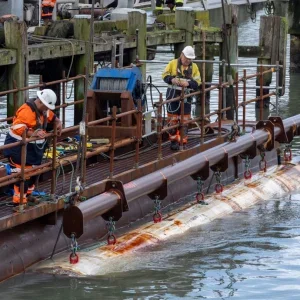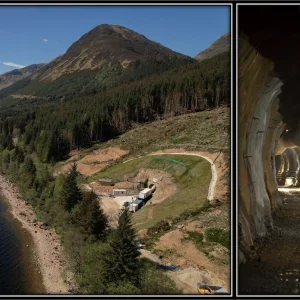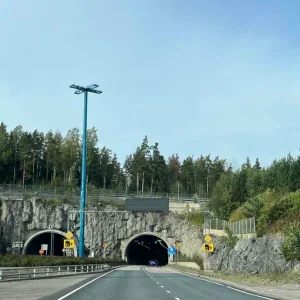They claim it’s not a contest, but TBM manufacturers Wirth and Herrenknecht will have four of their machines running against each other during the construction of the 28.5km long twin-tube railway tunnel through the hard rock of Sierra de Guadarrama in Spain. Both manufacturers are submitting two double shield 9.51m diameter machines in what will be seen by many as two concurrent races.
Each manufacturer will have a machine at the north portal of one the parallel tunnels, and one at the south portal of the other tunnel; so that in staggered drives, each machine will bore alongside, and towards, the other manufacturer’s TBM.
However, as T&TI went to press, Herrenknecht’s first machine was on site and half-way through assembly, while Wirth’s was still being disassembled in the NFM factory in Le Creusot. Both expect to start tunnelling during September, with the second machines arriving a month later, but it is unlikely they will launch simultaneously.
Operating Herrenknecht’s 5,500kW, 1,650 tonne S-201 north portal machine are ACS Proyectos, Obras y Construcciones, FCC Construcción, and Ferrovial Agromán. The JV operating the identical Herrenknecht S-202 TBM consists of: COMSA; Dragados Obras y Proyecto; NECSO Entrecanales Cubiertas; Obrascon Huarte Lain (OHL); and SACYR.
Wirth’s twin 5,700kW machines will be run by the same contractors.
A double shield was chosen to manage the possible varying ground conditions. Several fault lines will have to be crossed, and tunnel lining will be required. However, in solid rock, tunnel lining behind the double shield can be independent from the excavation process because of an integrated gripper system. Therefore, the typical stop-and-go process of conventional tunnelling becomes a continuous excavation.
The Túneles de Guadarrama will form an important part of the high speed rail link between Madrid and northern Spain. Better access will be granted to the national parks and ski resorts in the area.
Boring through the 160MPa rock will start next month.







